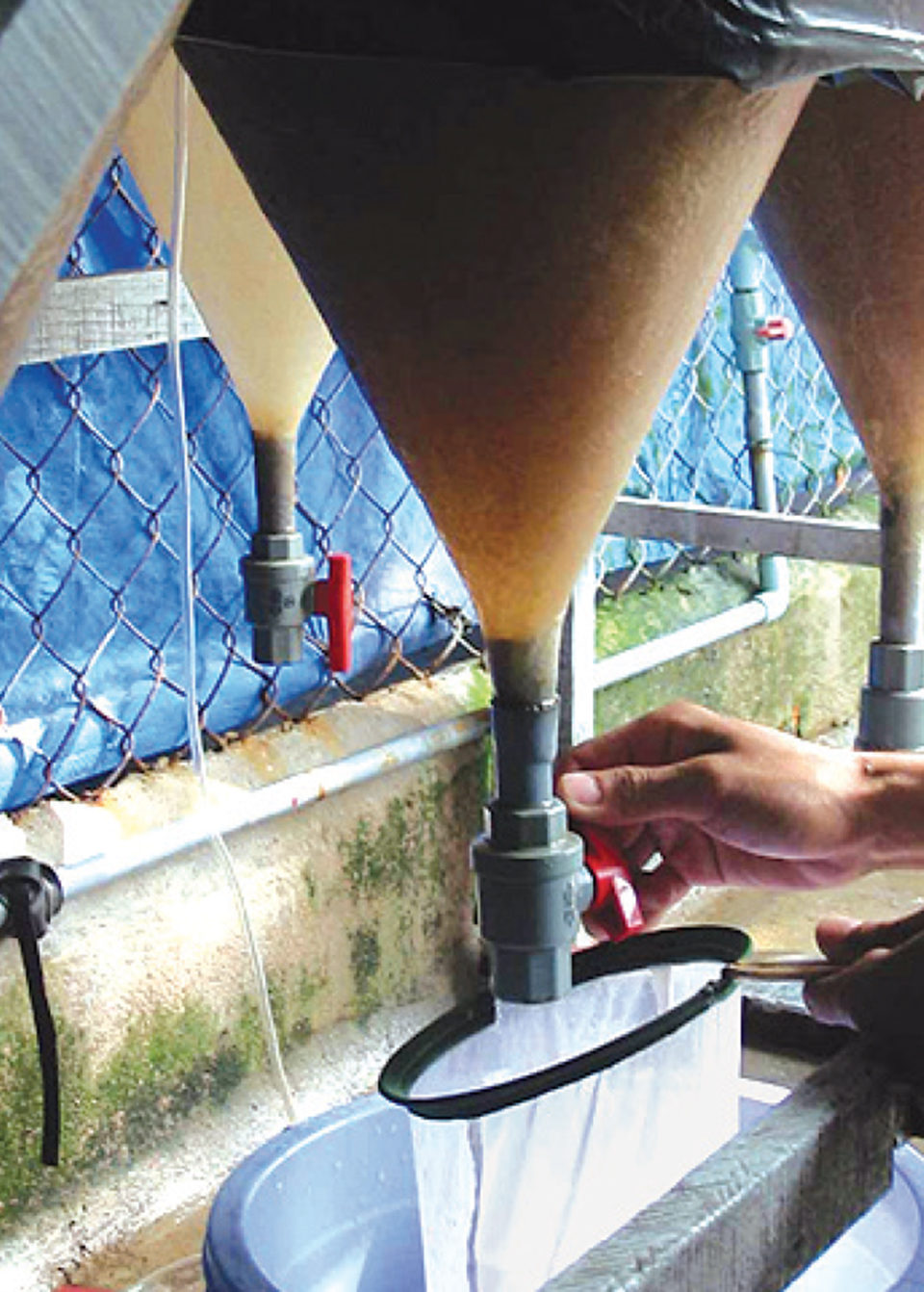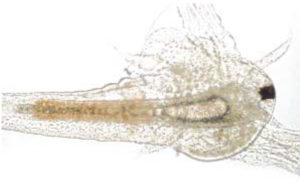Complete replacement in commercial conditions remains a challenge

Most hatchery technicians would be interested in replacing live feeds with nutritionally balanced artificial feeds to simplify larviculture systems and optimize the growth and survival of the shrimp larvae. Live artemia nauplii, the most typical larval feed for shrimp, can have inconsistent supply and quality, as they are obtained from cysts collected in the natural environment.
The use of artificial diets can help reduce and stabilize costs, and provide consistent nutrition and a predictable output. These diets are now successfully used to partially replace live artemia in many commercial shrimp hatcheries, but total artemia replacement has yet to be widely achieved.
Development of artificial diets
In the 1980s, David Jones in the United Kingdom and Akio Kanazawa in Japan succeeded in totally replacing live food for penaeid shrimp in the zoea and mysis stages, provided a single dose of live algae was given at the first-feeding zoea 1 stage. The work of David Jones and coworkers resulted in the development of FRIPPAK commercial cross-linked protein microcapsules.
The inherent difficulties in providing a complete nutritional package in sufficiently small particles to be ingested and digested by the small larvae of marine shrimp are well documented. Rapid nutrient losses in these diets can result in reduced nutritional value and fouling of the culture medium.
In addition, the use of a sufficiently impermeable coating to prevent leaching can result in poor digestibility and availability of the nutrients to the developing larvae. Furthermore, artificial diets should be neutrally buoyant in the water column to allow easy capture by the feeding larvae.
Artemia replacement
One important common factor in the studies reported by Jones and Kanazawa was the use of fully controlled laboratory conditions. In commercial-scale applications, the diets performed well but could not completely reduce the dependence on artemia. Subsequently, other major projects with the goal of artemia replacement in shrimp and fish larviculture have been carried out worldwide at research institutes in the United States, Australia, Belgium and other countries.
The aquafeed industry has invested significantly to improve the performance of artificial hatchery feeds. Published results and a market survey now reveal that the artemia replacement levels applied by commercial hatcheries have slowly but steadily increased year by year, in part due to the fluctuating cost of artemia cysts, decreasing postlarvae prices, and progress in feed formulation and feed-processing technology.
Replacement forms
Several papers published over the past six years by different groups have reported on the performance of experimental and commercial hatchery feeds. In general, the use of microbound feeds decreases survival or growth when fed at levels of 40-50 percent or higher. However, because of their lower cost compared to artemia, a partial replacement can result in considerable savings.
Liquid feeds tend to improve survival rates when used as supplements, but are not effective as replacement diets. Dry microcapsules perform well as algal and artemia replacement diets in early and late larval stages. But the consumption of artemia cysts only becomes significantly high in postlarval stages, not larval stages. However, hatcheries that severely cut artemia consumption while using low-quality feeds obtain animals of inferior quality and heterogenous growth in the postlarval stage as well as growout.
Toward full replacement

Articles by the authors and coworkers in previous issues of the Global Aquaculture Advocate reported on innovative developments with flakes, microcapsules and micro-bound feeds based on cross-linked protein microcapsule technology. When fed at 100 percent of the total feeding regime, these feeds generally maintained or improved survival and growth under controlled small- and medium-scale tank conditions.
Commercial-scale trials and customer feedback indicate that the economic benefit of using artemia replacement levels above 65 percent with these artificial diets does not justify the increased risk of culture failure, although this largely depends on geographic location. In late postlarval stages, however, total artemia replacement is both possible and increasingly common.
Note: Cited references are available from the author.
(Editor’s Note: This article was originally published in the August 2005 print edition of the Global Aquaculture Advocate.)
Now that you've finished reading the article ...
… we hope you’ll consider supporting our mission to document the evolution of the global aquaculture industry and share our vast network of contributors’ expansive knowledge every week.
By becoming a Global Seafood Alliance member, you’re ensuring that all of the pre-competitive work we do through member benefits, resources and events can continue. Individual membership costs just $50 a year. GSA individual and corporate members receive complimentary access to a series of GOAL virtual events beginning in April. Join now.
Not a GSA member? Join us.
Authors
-
Roeland Wouters, Ph.D.
INVE Technologies NV
Hoogveld 93, B-9200
Dendermonde, Belgium -
Patrick Sorgeloos, Ph.D.
Ghent University
Ghent, Belgium
Tagged With
Related Posts

Health & Welfare
Artemia bioencapsulation delivers probiotics via digestive tracts of fish larvae
Research with sturgeon and carp species indicated that encapsulated artemia has high potential to carry probiotics or other beneficial microorganisms.

Innovation & Investment
Artemia, the ‘magic powder’ fueling a multi-billion-dollar industry
Artemia, microscopic brine shrimp used as feed in hatcheries, are the unsung heroes of aquaculture. Experts say artemia is still inspiring innovation more than 50 years after initial commercialization. These creatures are much more than Sea-Monkeys.

Health & Welfare
A holistic management approach to EMS
Early Mortality Syndrome has devastated farmed shrimp in Asia and Latin America. With better understanding of the pathogen and the development and improvement of novel strategies, shrimp farmers are now able to better manage the disease.

Health & Welfare
Acclimating shrimp postlarvae before pond stocking
Shrimp postlarvae acclimation before stocking into the various growout systems (ponds, raceways, tanks) is a critical – and often overlooked, sometimes taken for granted – step in the shrimp culture process. Various water quality parameters should be changed slowly so that the young shrimp have the time to gradually adapt to the new conditions.


